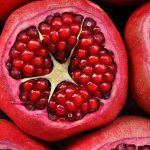
When I first used membranes in my Ph.D., pervaporation was a method seen as an adjunct to gas separation methods being explored at the time. The technique was being applied to the separation of ethanol from water in mixtures so it was easy to see applications in both fermentation, removal of ethanol from alcoholic beverages, recovery of volatiles from wastes such as crab and other crustacean waste (Martinez and Sanz, 2011) and so forth (Neel, 1991, 1993; Feng et al., 1997; Girard and Fukumoto, 2000).
Pervaporation exploits the properties of liquids that pass through homogenous polymeric (Shao and Huang, 2007) or zeolitic membranes. It differs from gas separation in that the concentration of the components passing through the polymer membrane (permeation) are higher. The associated diffusion coefficients are different between the processes and so are the transport equations. I refer to the use of response surface modelling (Khayet et al., 2008; Garcia et al., 2009), as a design method for optimising the application. Raising the temperature improves the separation although it begins to compromise the non-thermal nature of the process. Claims for aroma concentration of up to 50 times have been made (Wensley et al., 1995). For juices, a temperature of processing below 50°C would be recommended based on personal experience. This is because it represents the optimum temperature for enzymic liquefaction of fruit pulps prior to pressing.
We can find specific examples where pervaporation has been applied such as the recovery of aroma volatiles from brewed coffee beverages (Randow Assis et al., 2010) and fermenter broths (Schafer et al., 1999) using an ethylenepropylene –diene terpolymer, or for recovery of orange juice (Wensley et al., 1995) and apple juice aromas (Alvarez et al., 2000), recovering alcohol from wine (Tacs et al., 2007). This implies that concentrated forms of different aromas specifically obtained by this process might be added to products to reinforce or enhance particular beverages- hence the commercial interest.
Pervaporation And Aroma Recovery
A more detailed examination of volatile aroma recovery was examined with orange juice (Aroujalian & Raisi, 2007). They looked at the effects of various operating parameters including feed flow rate and temperature, and the permeate pressure on both flux and selectivity. Here feed flow rate which corresponded to various Reynolds numbers did not have a significant effect on process performance whilst feed temperature and permeate pressure variations certainly affected both flux and selectivity of aroma compounds. Increasing feed temperature produced a higher flux rate and higher enrichment factor. If the permeate pressure was increased, both flux and enrichment factors dropped. Some aroma compounds showed higher enrichment factors when the unit was operated a higher permeate pressures. This situation is probably the case for a variety of fruit juices.
The same research team has developed a predictive mass transfer model for the separation of pomegranate aromas. Here they used a modified version of Flory-Huggins theory to predict equilibrium sorption of aroma compounds and water entering the membrane. The passage of molecules through the membrane was characterised using Maxwell-Stefan equations which accounted for negligible flux concentration and a diffusive coupling effect (Raisi et al., 2009).
The pervaporation process can also be used as part of a more sophisticated membrane system using ultrafiltration or reverse osmosis, making full use of the fruit such as apples (Alvarez et al., 2000) or kiwifruit (Cassano et al., 2006). More recent examples include recovery of beer aroma to be added to low-alcohol and alcohol free beer to improve their sensory acceptance (del Olmo et al., 2014).
Recent Desalination Examples Using Pervaporation
In recent years, membrane distillation (MD) has come to prominence because it is an effective system for desalinating seawater. However pervaporation has also been effective in overcoming the technical challenges that MD poses.
Graphene oxide (GO) composite membranes were prepared for an inland brine desalination exercise (Cha-Umpong et al., 2019). In this example, the GO membrane showed fast water transport through the nano-porous membrane without seeing any salt deposition in the form of crystals on the surface of the membrane system. The unit was operated with temperature oscillation so that flux decline was less prominent than with a constant temperature mode.
The design equations for this pervaporation are ideally sourced from Nagy (2011) which covers, comprehensively, the subject. There are many research papers which cover more specific points and there is a more general topic on the use of membranes on this web-site.
I’d welcome any comments on the technique especially where it refers to recovery of aroma from waste sources. Might sound odd but I’m looking at applications in this area for the technique.
References
Alvarez, S., Riera, F. A., Alvarez, R., Coca, J., Cuperus, F. P., Bouwer, S. T., Boswinkel, G., Gemert, R. W. van., Veldsink, J. W., Giorno, L., Donato, L., Todisco, S., Drioli, E., Olsson, J., Tragardh, G., Gaeta, S. N., Panyor, L. (2000) A new integrated membrane process for producing clarified apple juice and apple juice aroma concentrate. J. Food Eng., 46(2) pp. 109-125
Aroujalian, A., & Raisi, A. (2007). Recovery of volatile aroma components from orange juice by pervaporation. Journal of Membrane Science, 303(1-2), pp. 154-161 (Article)
Cassano, A.; Figoli, A.; Tagarelli, A.; Sindona, G.; Drioli, E. (2006) Integrated membrane process for the production of highly nutritional kiwifruit juice. Desalination 189 (1-3) pp. 21-30
Cha-Umpong, W., Dong, G., Razmjou, A., Chen, V., (2019) Effect of oscillating temperature and crystallization on graphene oxide composite pervaporation membrane for inland brine desalination. J. Membrane Sci., 588 117210 (Article)
del Olmo, A., Blanco, C.A., Palacio, L., Pradanos, P., Hernandez, A. (2014) Pervaporation methodology for improving alcohol-free beer quality. J. Food Eng., (Article)
Feng, X., Huang, R.Y.M. (1997) Liquid separation by membrane pervaporation: a review. Ind. Eng. Chem. Res. 36 pp. 1048–1066.
García V, Landaburu–Aguirre J, Pongrácz E, Perämäki P & Keiski R (2009c) Dehydration of water/dichloromethane/n–butanol mixtures by pervaporation; optimisation and modelling by response surface methodology. J Membr. Sci. 338 pp. 111–118.
Girard, B., Fukumoto, L. R. (2000) Membrane processing of fruit juices and beverages: a review. Crit. Rev. Food Sci. Nutr. 40 (2) pp. 91-157
Khayet, M., Cojocaru, C., Zakrzewska-Trznadel, G. (2008) Response surface modelling and optimization in pervaporation. J. Membr. Sci., 321 (5) pp. 272-283
Martinez, R., Sanz, M.T. (2011) Concentration by pervaporation of representative brown crab volatile compounds from dilute model solutions. J. Food Eng., 105(1) pp. 98-104
Mulder, M.H.V., Smolders, C.A. (1984) On the mechanism of separation of ethanol/water mixtures by pervaporation I. Calculations of concentration profiles. J. Membr. Sci. 17 pp. 289-307
Nagy, E. (2011) Pervaporation. in: Basic Equations of the Mass Transport through a Membrane Layer edt. Nagy, E. Chapt. 11
Neel,J. (1991) in: R.Y.M. Huang (Ed.), Introduction to Pervaporation, Pervaporation Membrane Separation Processes. Elsevier, Amsterdam.
Neel, J. (1993) Pervaporation: fundamentals and practice. Makromol. Chem. Macromol. Symp. 70 pp. 327–339.
Raisi, A., Aroujalian, A., & Kaghazchi, T. (2009). A predictive mass transfer model for aroma compounds recovery by pervaporation. Journal of Food Engineering, 95(2), pp. 305-312 (Article).
Randow Assis, A. von, Saraiva, S. H., Martins da Matta, V. Ribeiro Bizzo, H. Correa Cabral, L. M. (2009) Recovery of the aroma compounds from coffee beverage by pervaporation process. Bol. Do Centro de Pesquisa Processamento de Alimentos. 27(1) pp. 1-10
Shao, P., Huang, R.Y.M. (2007) Polymeric membrane evaporation. J. Membr. Sci. 287(2) pp. 162-179
Takács, L., Vatai, G., & Korány, K. (2007). Production of alcohol free wine by pervaporation. Journal of Food Engineering, 78(1) pp. 118-125
Wensley, C. G., Hood, L. L., Schmitt, T. E., Chambers, K. D. (1995) Pervaporation membrane technology for the recovery and concentration of orange juice essence. IFT Annual Mtg., 1995


Leave a Reply